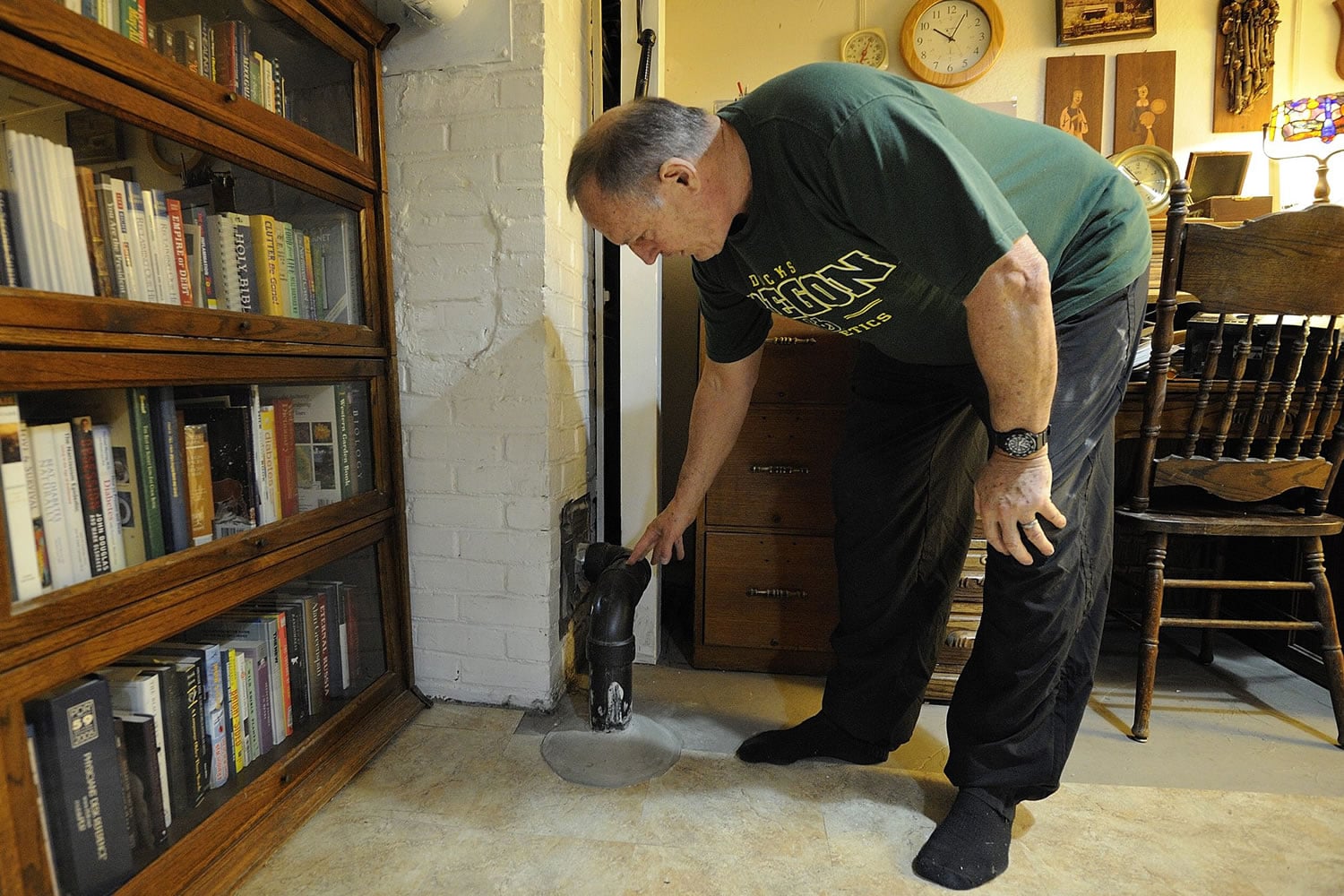Local and federal health officials urge all residents to test their homes for radon. Home test kits are available for as little as $15, and can be found at many hardware stores.
January is National Radon Action Month. More information about the potentially hazardous gas is available at EPA.
The number didn’t mean much to John Koroloff at first: 26 picocuries per liter.
That’s the amount of radon gas the retired environmental science professor measured in the air of his own basement, after getting his hands on a home test kit a couple of years ago. He just wasn’t sure if it was good or bad.
“It meant nothing to me,” Koroloff said.
That feeling didn’t last long. Turns out, the reading registered way past what’s considered a safe level of radon — the second-leading cause of lung cancer in the United States, after only smoking, according to the Environmental Protection Agency.
Koroloff didn’t waste time in taking action. He used another test kit to verify his initial result — the second test came in at 22 picocuries per liter (pCi/L), still more than five times higher than the EPA’s safe radon threshold. He installed a new ventilation pipe in the basement of his home in Vancouver’s Rose Village neighborhood, and more recently worked on new walls and flooring.
Koroloff didn’t stop there. He’s since made it his mission to reach out to his neighbors, encouraging them to learn about the potential risk themselves.
“As a resident of this community, I want to raise awareness,” Koroloff said. “It’s connected to a health outcome that you don’t want to get, or your children to get.”
Radon is a natural byproduct of geologic decay — particularly decaying uranium, which is found just about everywhere in varying levels in the soil, according to the EPA. The odorless, colorless gas is linked to more than 20,000 lung cancer deaths each year, according to the EPA.
Health risks vary widely across the country, largely depending on soil composition. But Clark County is among seven counties in Washington identified by the EPA as “Zone 1” areas — that is, having the highest potential for unhealthy radon levels.
Anything over 4 pCi/L is worth taking action, federal officials say.
Despite the danger, radon is a subject many people know little about, said Steve Tucker, president of Portland-based Cascade Radon, Inc. That’s despite research which continues to show it’s a significant health hazard, he said.
“As the data come in for this area, it all seems to put it being a worse problem than we thought,” Tucker said.
Cascade Radon helps homeowners adapt their own houses to make them radon-safe. The organization also helps design and build new structures with the same goal.
It’s not necessarily true that older buildings are more susceptible to high radon levels than newer ones, Tucker said. And amounts can vary widely. One home may register a high level, he said, while a home of the same age next door may not.
Because radon largely comes from the soil, radon levels in a house are mostly determined by how easily it can get through a foundation. Air convection can draw the gas from the ground into basements and crawl spaces, where it builds to unhealthy levels.
“Any house of any age, of any construction type can be subject to high radon levels,” Tucker said. “The only way to know is to test.”
The best way to lower radon levels is “depressurization,” Tucker said. That is, using ventilation to move the gas up and safely out of the home instead of trying to seal it out.
In Koroloff’s case, his basement remains a work in progress. A ventilation pipe connecting the chimney to an opening under the basement floor did significantly reduce radon levels in the area, he said. But even after replacing much of the flooring and walls, another radon test this week still came in at almost 10 pCi/L, Koroloff said.
Koroloff is planning to take other measures to bring that number down, including the installation of a fan he recently ordered. He’s also continuing to reach out to Vancouver residents through his neighborhood association, and a Clark County neighborhood health program.
Koroloff’s motivation is simple.
“It’s just letting people know,” Koroloff said. “An ounce of prevention is worth a pound of cure.”
Eric Florip: 360-735-4541; http://twitter.com/col_enviro; eric.florip@columbian.com.




